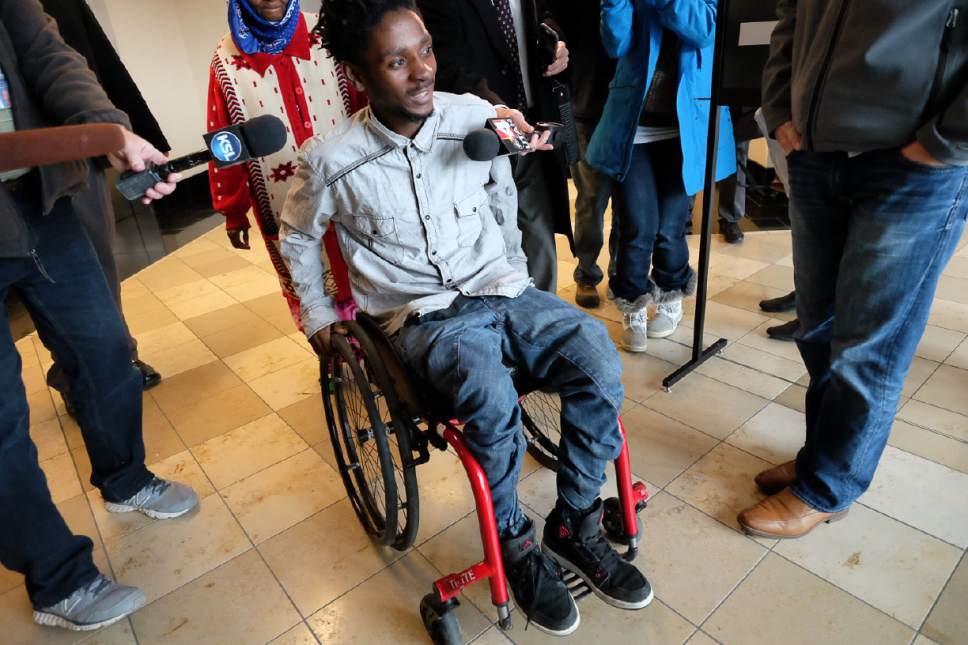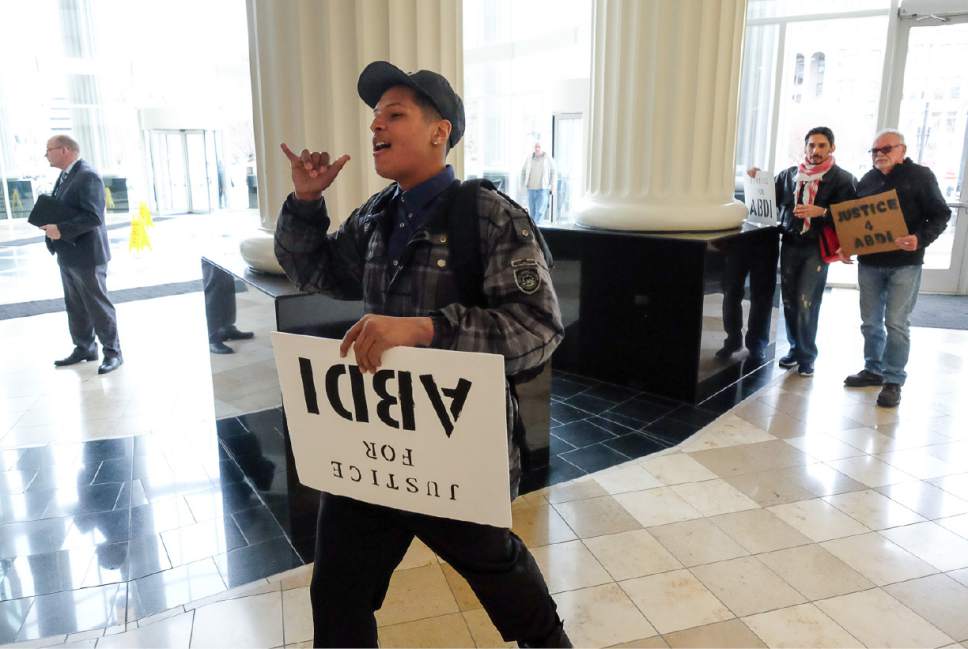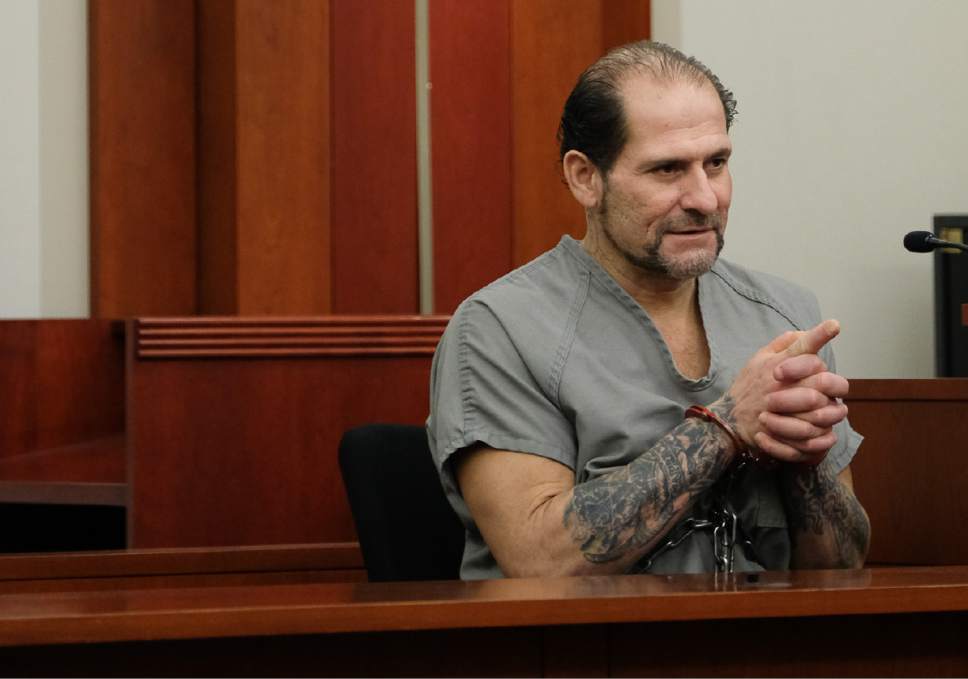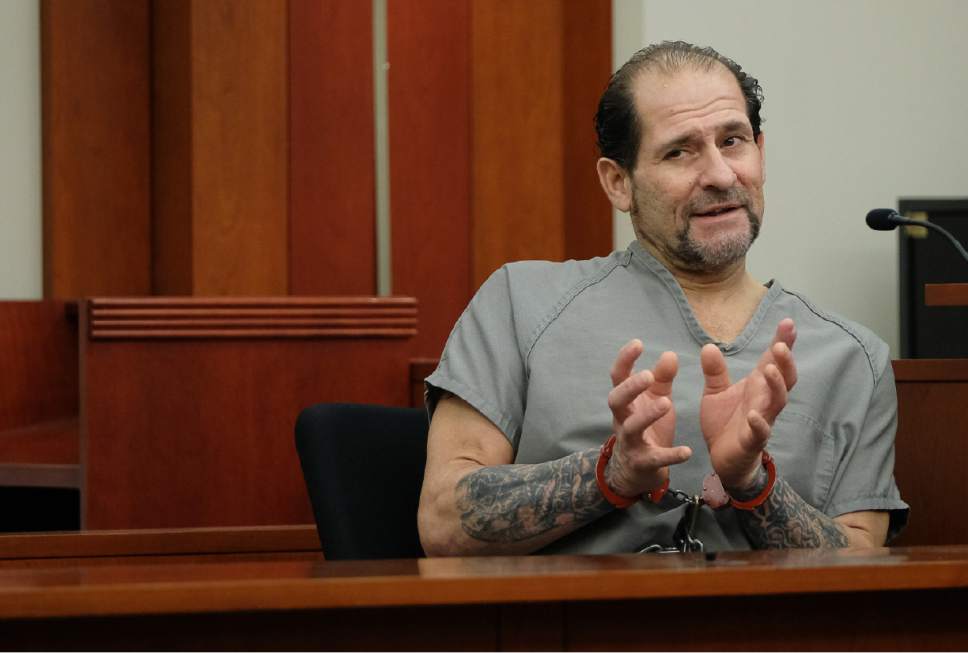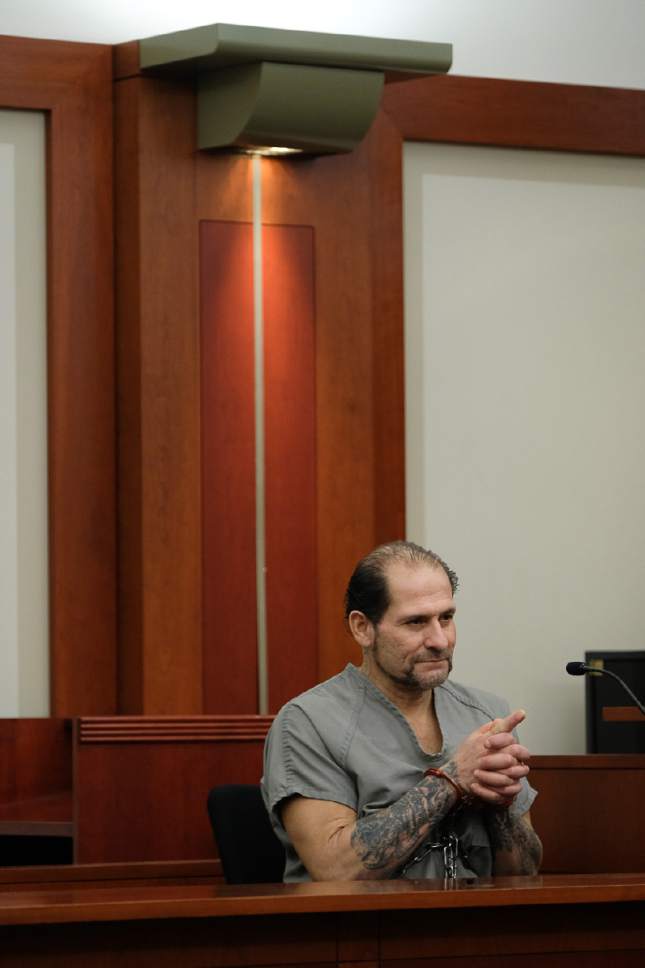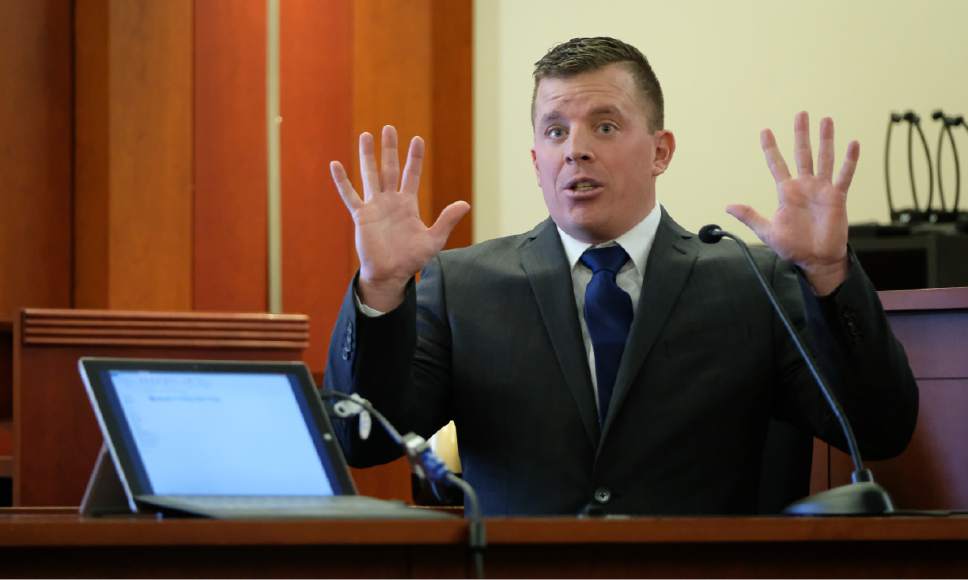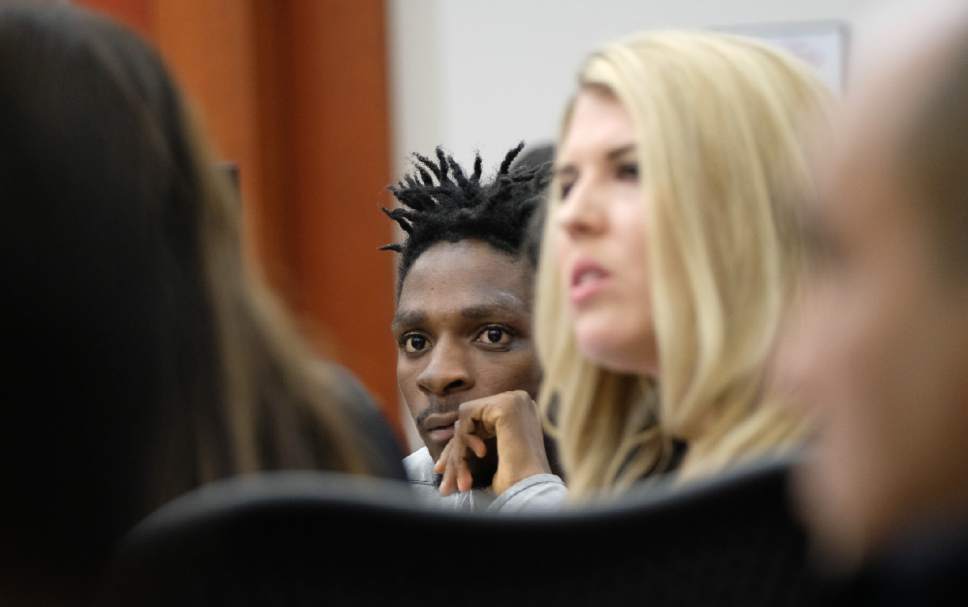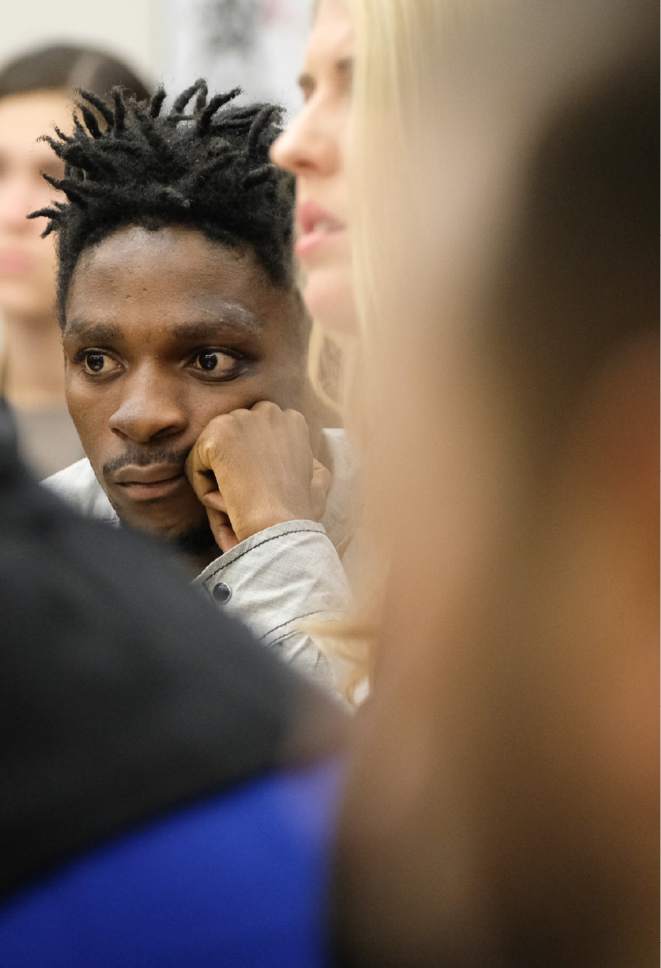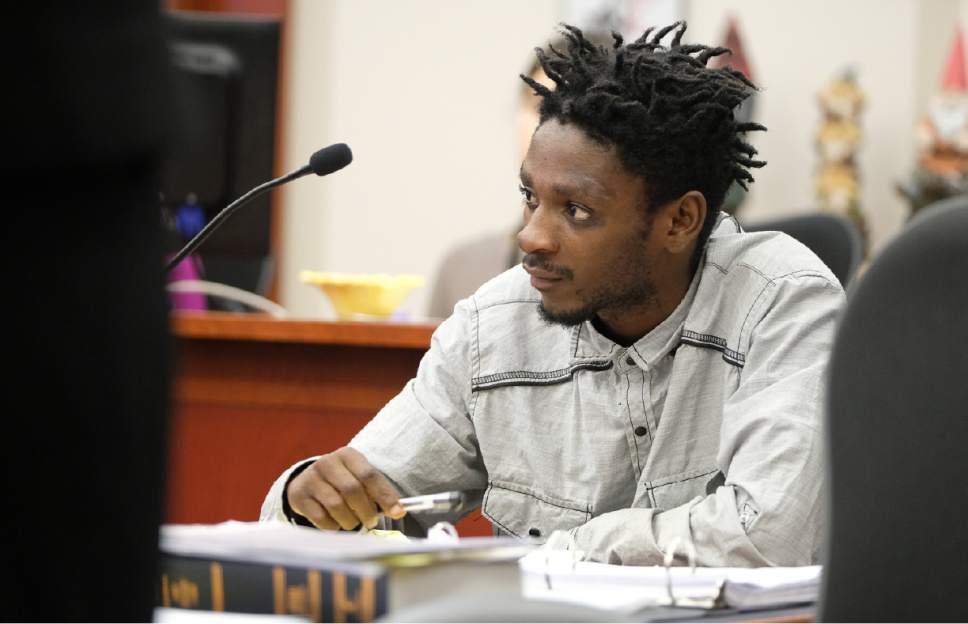This is an archived article that was published on sltrib.com in 2017, and information in the article may be outdated. It is provided only for personal research purposes and may not be reprinted.
If you put a young man in prison with older, more sophisticated criminals, "it almost always" makes the younger person worse, an expert on the criminal justice system said Monday in 3rd District Juvenile Court.
Rob Butters, an assistant professor of social work at the University of Utah, was testifying in connection with Abdullahi "Abdi" Mohamed, who was 17 in February 2016 when he was shot by police outside a downtown Salt Lake City homeless shelter while allegedly assaulting a man with a hollow metal rod in a dispute about a drug purchase.
In August, Salt Lake District Attorney Sim Gill found the officers were justified in shooting the now-19-year-old man. Gill charged Mohamed with first-degree felony aggravated robbery and second-degree felony drug possession with intent to distribute.
The issue on Monday was whether Mohamed should stay in juvenile court or be prosecuted in the adult system. His hearing is expected to continue Wednesday.
Called by the defense, Butters advocated against moving the case, telling Judge Julie Lund, "There's not research that supports transferring kids to adult court with a good outcome."
He said that in adult prison, youths are placed in maximum security for their own safety and are let out of their cells for an hour a day.
"It's a terrible place," Butters said. "Especially for where these young people are at, developmentally."
The ideal situation, Butters said, is to "put kids with kids, and low-risk offenders with low-risk offenders."
Butters testified that Mohamed's history shows he does well in treatment but struggles when he goes home and that he ends up being in contempt of court.
Mohamed has a lengthy juvenile record, Butters said, but many were contempt-of-court charges. This history makes him "high risk" in that regard.
Butters said Mohamed, a Somali refugee, faces problems with communication and support at home, which is typical for first-generation immigrant families.
Mohamed, who scored low in "antisocial orientation," doesn't seem to take joy in fighting and confrontation, Butters said.
The ideal situation for Mohamed, Butters said, would be to go to an intensive outpatient treatment center.
"I can imagine that being shot and almost dying would have a big impact on depression, substance use and trauma," he said. "We can't downplay the significance of that event and how that affects his ability to get out of bed or the want to self-medicate."
Portions of the hearing when Mohamed's psychological evaluations are discussed will be closed to the media.
After hearing testimony this week, the judge will decide whether the case should remain in the juvenile system or go to the adult court. If it remains in the youth system, the maximum punishment that Mohamed can face is a stay in a juvenile secure care facility until he is 21 years old. In the adult court, he would face a maximum penalty of up to life in prison if convicted of the first-degree felony charge.
During a January preliminary hearing, Lund had ruled that there was probable cause for the case to move forward.
On Feb. 27, 2016, Mohamed allegedly assaulted a man who had asked to buy a marijuana cigarette from him for $1.10 near the Road Home shelter, 210 S. Rio Grande St. (440 West). That man, Kelly McRae, testified at the preliminary hearing that when he asked Mohamed for a joint, the teen pulled out a pill jar with what McRae thought were other drugs that he didn't want.
McRae testified that Mohamed appeared to be upset because "I was taking up his time," and McRae said he offered Mohamed a metal rod in an attempt to get him to leave.
But after following Mohamed to meet with another man, McRae testified that the teen assaulted him with the metal rod, which has been described as a handle for a mop, rake or a broom.
Salt Lake City police Officers Kory Checketts and Jordan Winegar spotted this assault while investigating a report of a stolen cellphone, they testified at the preliminary hearing.
Their bodycam videos — which were publicly released in January after the preliminary hearing — show the two officers run toward the assault scene, yelling, "Put it down," "Drop it" and, "Police!" The video shows the second man notice the officers and walk away from the assault, while Mohamed continues toward McRae.
As the officers yell, McRae backs up with his hands in the air while Mohamed moves toward him, the broom handle still in hand. As the officers fire their weapons, Mohamed immediately drops to the ground and the metal handle flies from his hands.
"At that point, I stopped the threat using my firearm," Checketts testified, adding that Mohamed could have seriously injured McRae.
Mohamed — who arrived at the courthouse Monday in a wheelchair — was struck by four bullets, and was in a medically induced coma, hospitalized for weeks.
McRae testified that he had large welts and bruises on his arms and back after the assault.
While Gill declared that the officers were justified in firing their wea¥pons, Salt Lake City's Civilian Review Board found that the actions of two officers were "not within" policy, according to the board's report.
The Salt Lake Tribune does not generally identify juveniles charged with a crime, but Mohamed's family publicly identified him in the wake of the police shooting.


